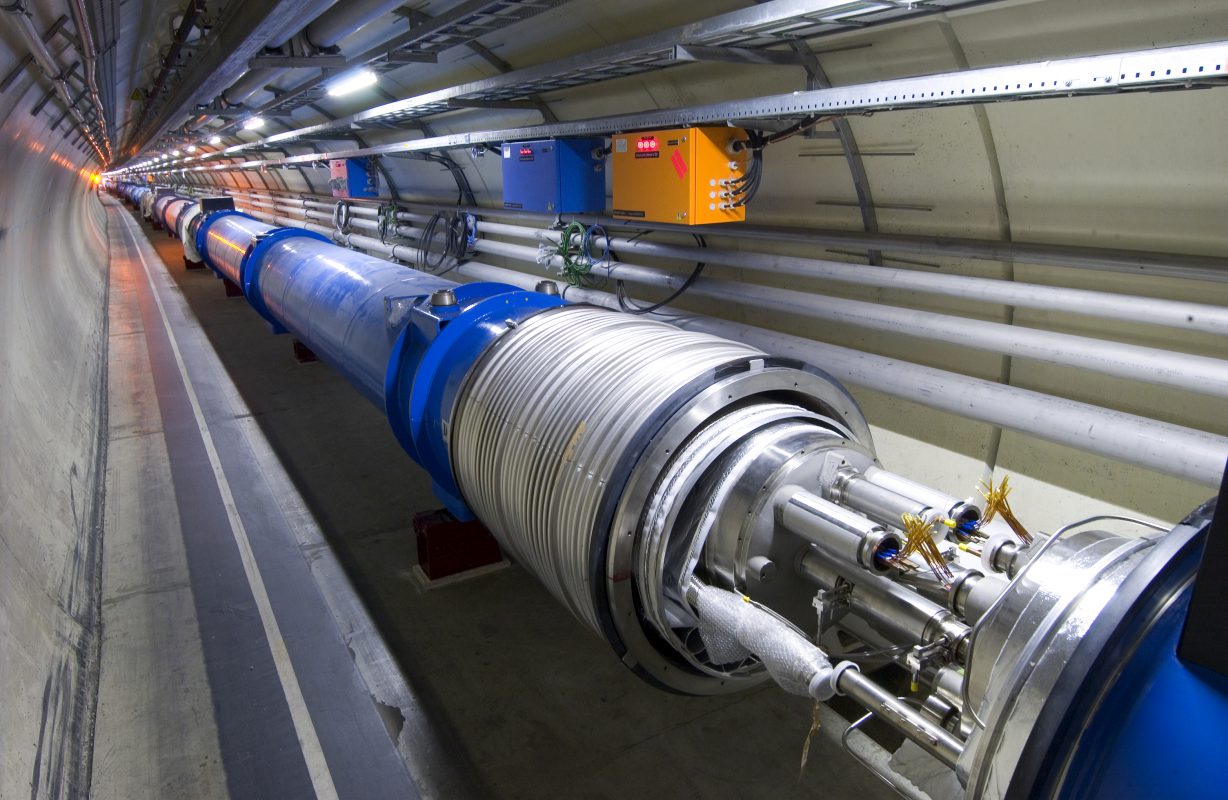2023 Tele Vue Product Anniversaries
What do Google, the Human Genome Project, Large Hadron Collider, asteroid Bennu, and Tele Vue have in common? Read our celebration of Tele Vue product anniversaries as we wind our way through the history of big science and technology.
1998: 25 Years Ago
Our Tele Vue-85 (85mm, f/7) APO refractor (mobile site) is 25-years young this year. At 19″ long, this scope is airline portable and has an expansive 4.4° field of view (with 55 Plössl) and comes with a soft case. Improvements over the years include a more robust 2″ focuser featuring dual drawtube tension screws acting on a brass clamp ring for a positive lock, dual end ring lock screws, as well as a standard 10:1 dual speed pinion assembly.
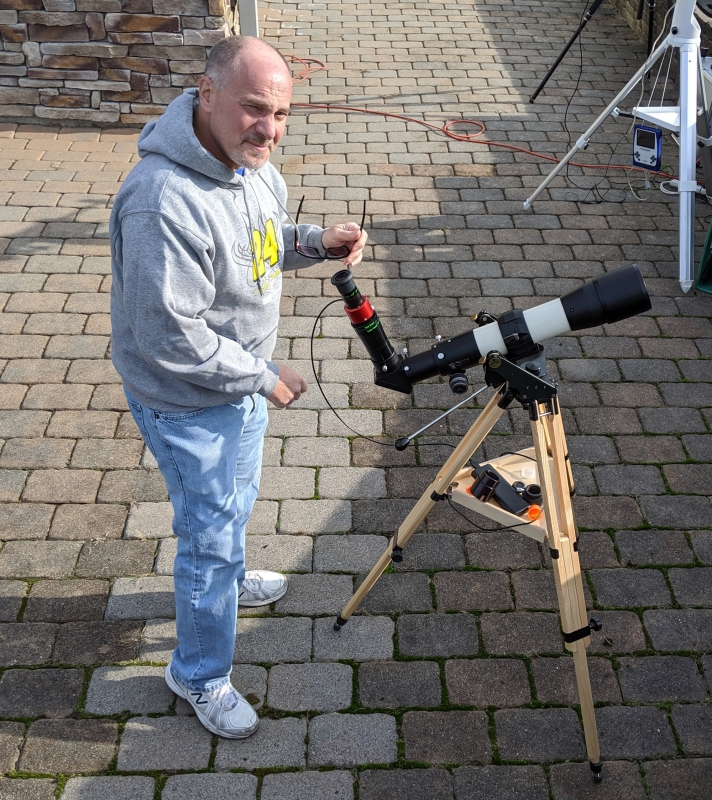
This is also the year that the first pair of Powermates were introduced (mobile site) to the world: the 2.5x and 5x Powermates in 1¼” barrel format. These universal amplifiers do away with vignetting, edge aberrations, and exit pupil shift associated with simpler negative lenses, this also allows for higher magnifications without tradeoffs. They can even be stacked and are recommended for solar Hydrogen-α work. With the 1¼” PMT T-Ring Adapter (PTR-1250) both these amplifiers allow for easy camera attachment through T-ring adapters. They are also parfocal with Tele Vue 1¼” eyepieces.
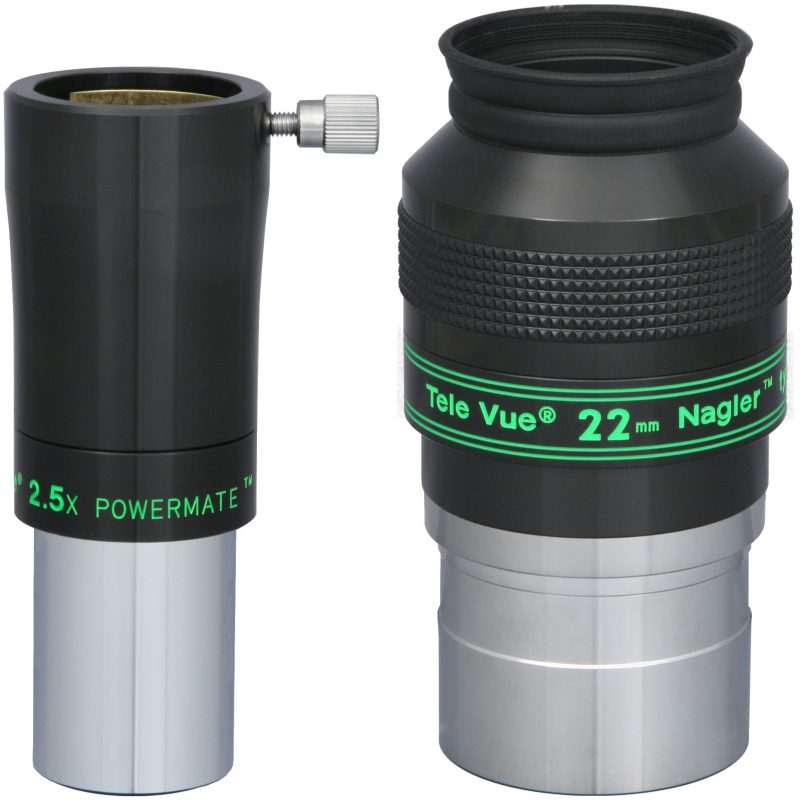
In 1998 the 22mm Nagler Type-4 eyepiece (mobile site) was introduced. Intended as the long eye relief 82° Nagler series to replace the Nagler Type 2 series, the Type 4s yielded more contrast, reduced pincushion, more true field, and longer eye relief. With the added eye relief, the click-stop “Instadjust” eyeguard helps maintain proper eye distance and centration.
2003: 20 Years Ago

In 2003 we introduced a high-performance, super-compact, APO doublet refractor that functions as the ultimate “grab ‘n go,” day/night scope, or a super-finder for a larger scope, and even a great telephoto lens for digital cameras. That scope is the Tele Vue-60 (60mm, f/6) which compacts down to just 10″ / 254 mm in length without accessories (mobile site). It has a 2-stage, 1¼” focuser that combines a quick-focus drawtube with a helical fine-focus. The exquisitely machined and anodized all-metal construction includes an adjustable dovetail balancing bar with three ¼”-20 threaded holes for attachment to a mount.
We launched BirdScope.com that year to highlight the utility of our smaller telescopes for birding and nature usage. With large objectives and astronomical power, our small scopes are excellent for dawn/dusk usage and photography.
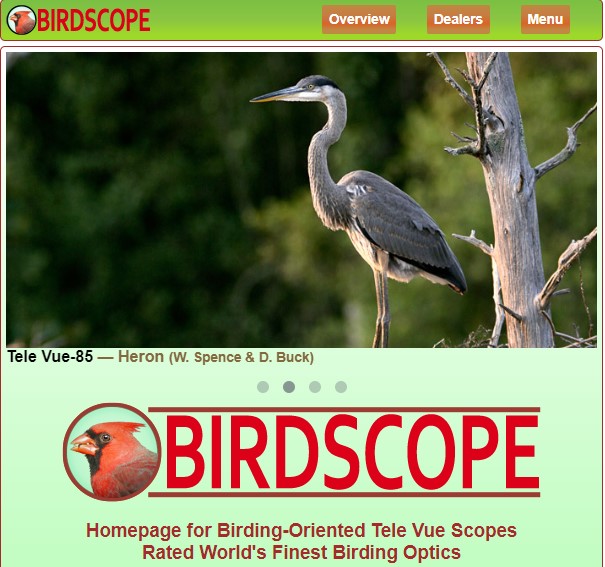
The 3.5mm Nagler Type 6 made its debut this year (mobile site). This extension of the Type 6 series is a natural progression of 1.4x power steps from 7mm and 5mm Naglers and provides a high power, longer eye relief (12 mm) alternative for short focal length scopes while maintaining sharpness across its 82° apparent field of view. These are the lunar and “planetary” eyepieces with field to spare.
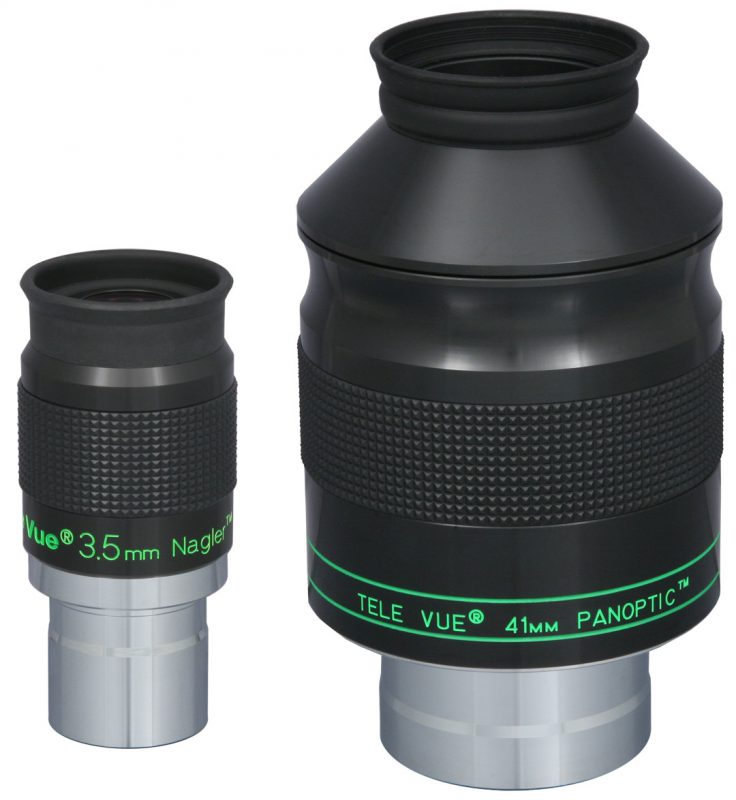
Can you remember a time before the 41mm Panoptic (mobile site)? This legendary big brother to the 24mm Panoptic (largest 1.25″ field) with its 46mm field stop delivers the largest field possible in 2″ eyepieces. An adjustable and removable screw-type top allows quick, comfortable eye positioning for this long eye relief marvel. The scalloped shape gives a positive grip.
2008: 15 Years Ago
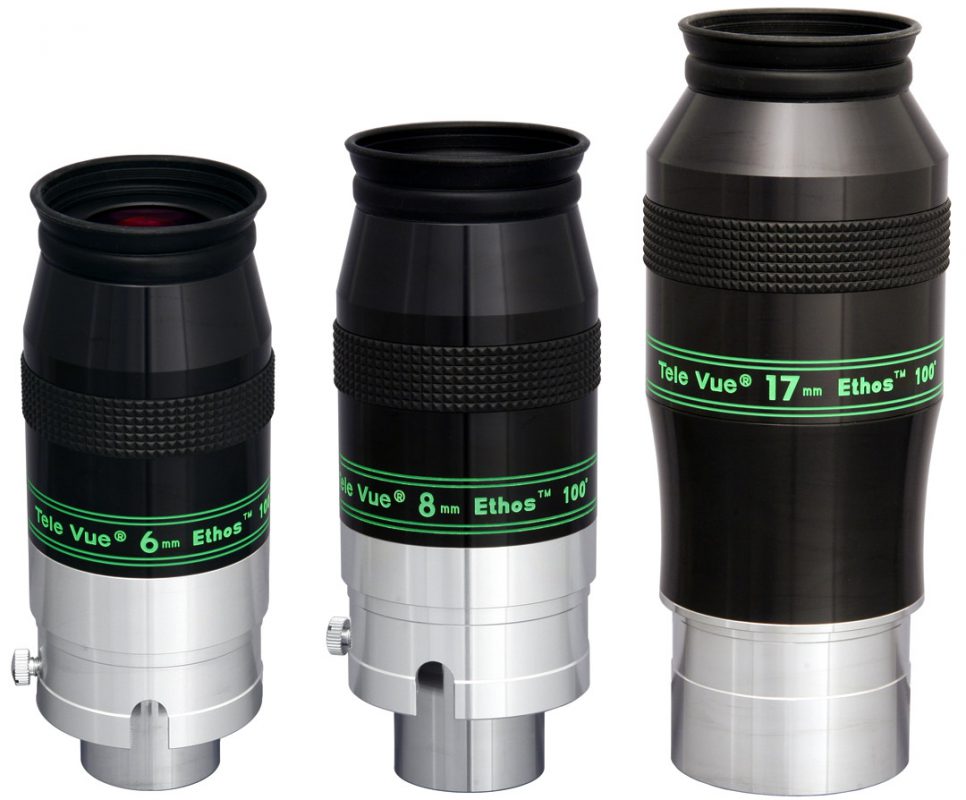
2008 saw an expansion of the Ethos line with three new focal lengths: the 6-, 8-, and 17mm Ethos 100° eyepieces (mobile site). We noted that the 8mm Ethos had the same high power as our discontinued 8–24mm Zoom eyepiece with 83% of the field of the zoom’s 24mm focal length! Power and field of view: what did we do before Ethos?
The 6mm and 8mm models work with binocular viewers. In 1¼” mode, with Tele Vue’s “high-hat” 2″-1¼” adapter, they will be parfocal with most Tele Vue eyepieces.
The 17mm ETHOS is an ideal complement to the 31mm Nagler Type-5. They are parfocal and the 31mm Nagler Type-5 has exactly twice the true field area. It is parfocal with the same eyepieces as the 6mm and 8mm Ethos eyepieces.
All Ethos 100° eyepieces have 15mm eye relief, 50% more viewing area than 82° Nagler eyepieces, and accept DIOPTRX eyesight astigmatism correctors. The 6- and 8mm eyepieces have dual 2″ / 1¼” barrels and work in binocular viewers. The 17mm has a 2″ barrel and offers a wider true field than the original 13mm Ethos.
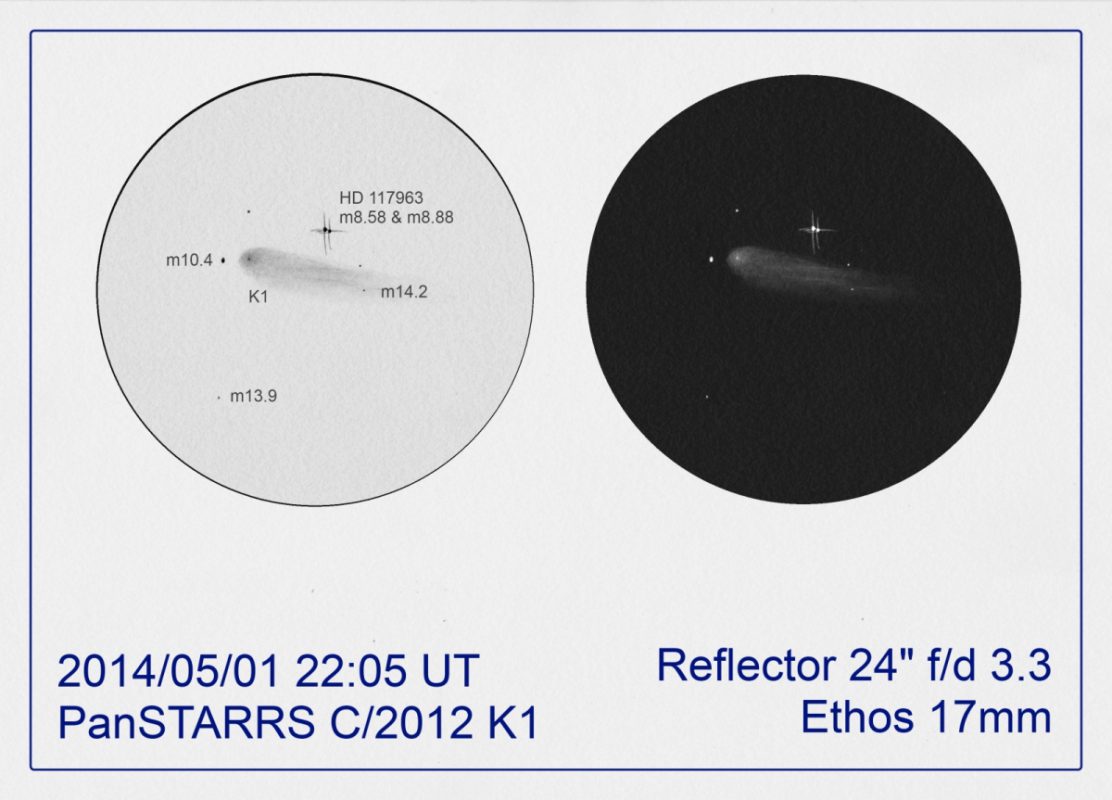
2018: 5 Years Ago

We introduced telescope optical tube assembly (OTA) Accessory Packages, SCT Rich Field Kits, and Diagonal Packages in 2018. The package costs can be substantially less than pricing each component individually. We described these packages in two blogs: one for the Tele Vue-60, Tele Vue-76, and Tele Vue-85 scopes the other for the Tele Vue-NP101is, Tele VueNP127is ,SCT Rich Field Kits, and Diagonal Packages.
The telescope packages allow our OTAs to be turned into “complete” units that include an eyepiece, diagonal, and telescope mounting ring customized for each telescope.
The diagonal packages include our 2″ Everbrite (99% reflection) or Aluminum (96% reflection) diagonals. Each diagonal body is machined from a solid block of aluminum. This means heavy accessories can’t force the diagonal body to “unscrew” from the barrel as with other brands. Permanent alignment is CNC-machined into the diagonal. They feature brass clamp rings, anti-reflection threads, 48-mm filter threads, and now include our 2”-1¼” HiHat adapter with brass clamp ring. The “high-hat” adapter is specially designed with a high rise head to keep Tele Vue Barlows and Powermate™ amplifiers away from the diagonal mirror.

Our Schmidt–Cassegrain Telescope (SCT) Rich-Field Kit Package delivers up to a 3x increase in field area over 1.25″ diagonals. The package features our 2″ Everbrite diagonal and an adapter that screws onto the SCT visual back to allow use of standard 2″ eyepiece accessories. Our Everbrite diagonal has 99% reflection across the visual spectrum.
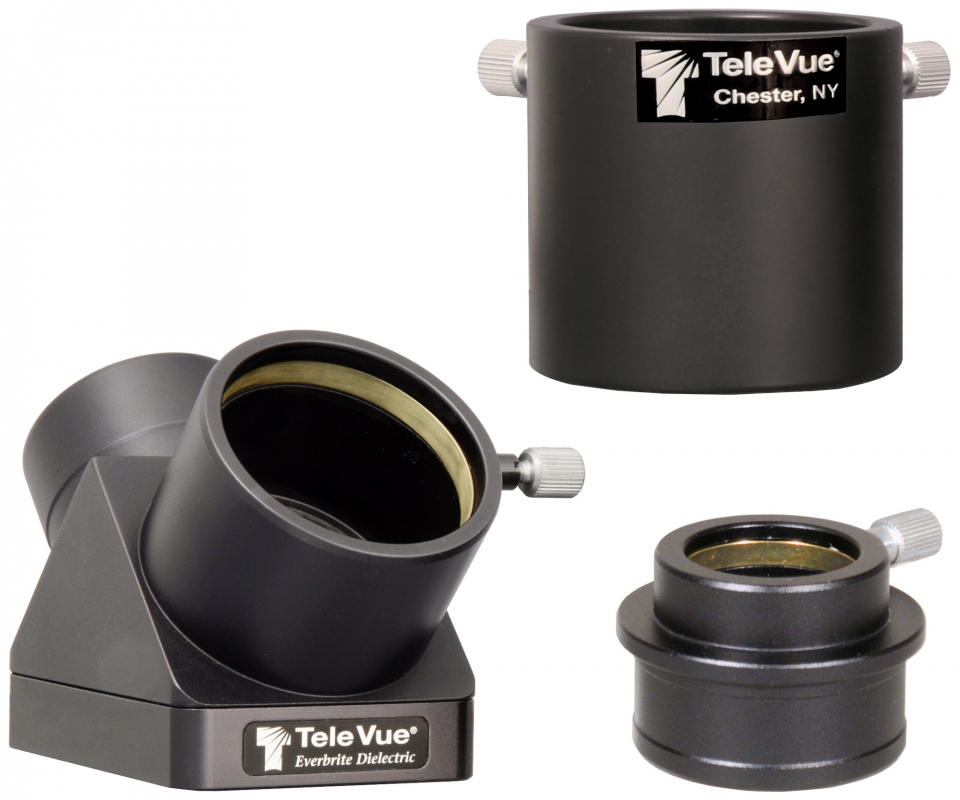
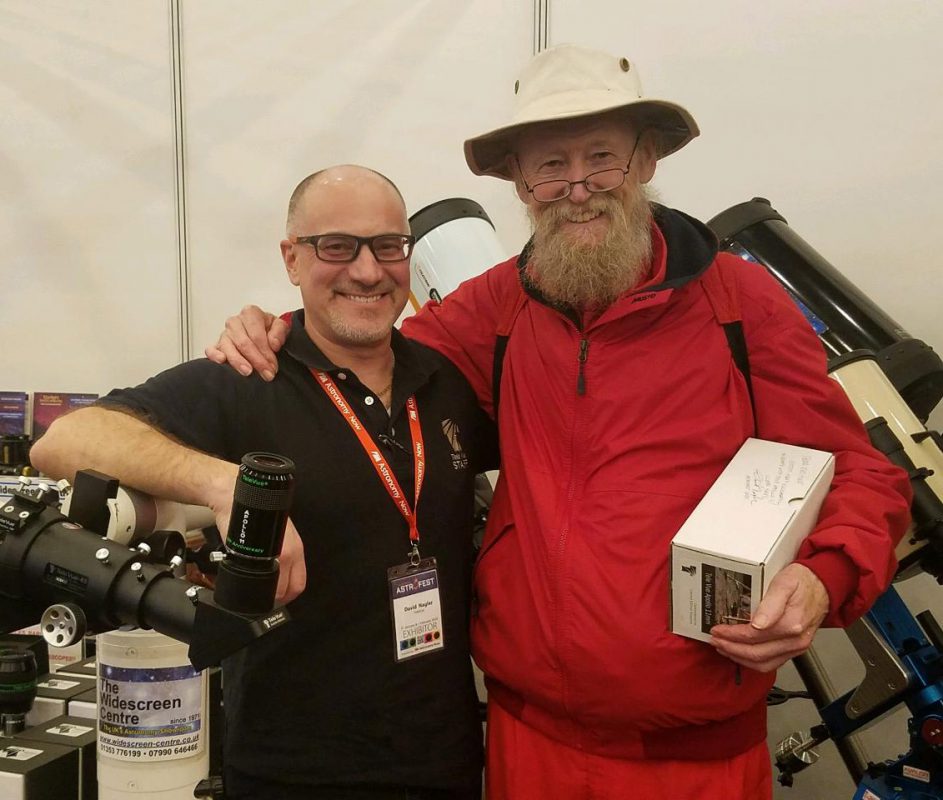
This week we’ll witness an event not seen in recent memory. You’re thinking: the return of a long-period comet? No! The Return of David Nagler, in-person, to European AstroFest this week at the Kensington Conference & Events Centre in London! European AstroFest is the UK’s premier astronomy conference and exhibition, featuring 16 talks from leading astronomers and space scientists plus three floors of exhibition space. It takes place on February 3rd and 4th, 2023. If you want to try out some eyepieces, take a photo, or just talk Tele Vue with David, stop by the Widescreen Centre stand.

Did you observe, sketch, or image with Tele Vue gear? We’ll like your social media post on that if you tag it #televue and the gear used. Example:
#televue #tv85 17mm #ethos #C2022E3
Do you want your Tele Vue images re-posted on Tele Vue Optics’ Social Media accounts? Use this hashtag for consideration:




